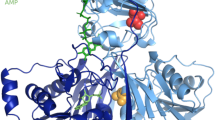Abstract
The post mortem and microscopic findings of two newborn male sibling of Turkish origin suffering from multiple acyl-CoA-dehydrogenation deficiency (glutaric aciduria type II) are reported in detail for the first time. The morphological disease pattern was strikingly identical in both siblings: enlarged bilateral polycystic kidneys, symmetric warty dysplasia of the cerebral cortex, and bile duct hypoplasia, cholestasis, siderosis and fatty degeneration of the liver were found in both infants. In addition, features of Potter syndrome (pulmonary hypoplasia and ‘Potter face’) were observed only in sibling I, and focal hypoplasia and dysplasia of pancreatic ducts only in sibling II.
It appears to be a rather remote chance that the rare metabolic disorder accidently coincided with the equally rare developmental abnormality in both siblings. We believe it to be more likely that both conditions are pathogenetically related in that the accumulation of large quantities of carboxylic acids exerted their effect already in intrauterine life, probably leading to cellular damage and secondary developmental defects of the fetal kidneys, liver, pancreas and brain. From the nature of the observed morphological alterations we speculate that the injury did not occur until after cessation of organogenesis during the fetal period of intrauterine development.
Similar content being viewed by others
References
Gregersen N (1979) Studies on the effect of saturated and unsaturated short-chain monocarboxylic acids on the energy metabolism of rat liver mitochondria. Pediatr Res 13:1227–1230
Gregersen N, Kolvraa S, Rasmussen K, Christensen E, Brandt NJ, Ebbesen F (1980) Biochemical studies in a patient with defects in the metabolism of acyl-CoA and sarcosine: Another possible case of glutaric aciduria type II. J Inher Metab Dis 3:67–72
Hird FJR, Weidemann MJ (1966) Oxidative phosphorylation accompanying oxidation of short-chain fatty acids by rat liver mitochondria. Biochem J 98:378–388
Landing BH (1974) Considerations of the pathogenesis of neonatal hepatitis, biliary atresia and choledochal cyst. The concept of infantile obstructive cholangiopathy. Prog Pediatr Surg 6:113–139
Osathanondh V, Potter EL (1964) Pathogenesis of polycystic kidneys. Arch Pathol 77:459–512
Przyrembel H, Wendel U, Becker K, Bremer HJ, Bruinvis L, Ketting D, Wadman SK (1976) Glutaric aciduria type II: Report on a previously undescribed metabolic disorder. Clin Chim Acta 66:227–239
Sweetman L, Nyhan WL, Trauner DA, Merritt TA, Singh M (1980) Glutaric aciduria type II. J Pediatr 96:1020–1026
Author information
Authors and Affiliations
Additional information
Supported by Deutsche Forschungsgemeinschaft, Grant No. Bo 395/5
Rights and permissions
About this article
Cite this article
Böhm, N., Uy, J., Kießling, M. et al. Multiple Acyl-CoA dehydrogenation deficiency (glutaric aciduria type II), congenital polycystic kidneys, and symmetric warty dysplasia of the cerebral cortex in two newborn brothers. Eur J Pediatr 139, 60–65 (1982). https://doi.org/10.1007/BF00442082
Received:
Accepted:
Issue Date:
DOI: https://doi.org/10.1007/BF00442082




